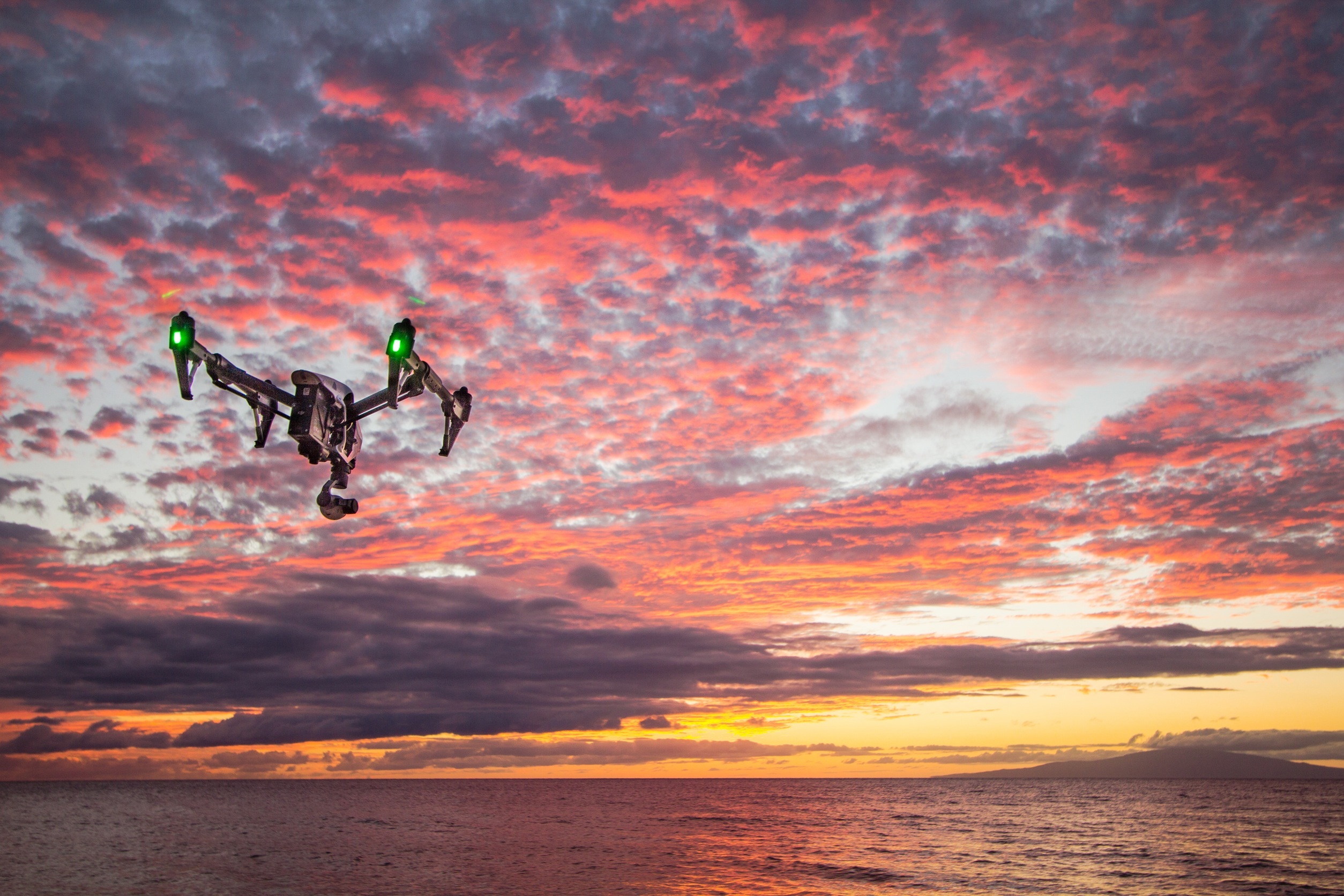 NEWS
NEWS
 NEWS
NEWS
 NEWS
NEWS
Today the Federal Aviation Administration (FAA), the regulatory body in the United States tasked with assigning rules and roles to flying vehicles, brought into effect the first rules that affect the use of commercial drones in the skies of America.
Companies and commercial drone pilots interested in taking advantage of these rules must first pass an aeronautics exam before gaining permission to fly. The first exam became available at 8 a.m. this morning—Monday, August 29, 2016. Already 3,351 people have signed up to take the exam, according to CNN Money.
“The FAA forecasts there could be as many as 600,000 unmanned aircraft used commercially during the first year after this rule is in place,” FAA Administrator Michael Huerta said in a press conference, reported by NPR. “Drones are helping to create a whole new means of realizing the American dream.”
Indeed, drone use in the U.S. and across the world has become a potential trending industry with numerous innovative uses from easily gathering aerial photos and video at a fraction of the cost of traditional methods. With drones infrastructure and building maintenance could be made much safer—sending a drone up to examine the external wall of a building is much safer than sending a person—and for agriculture or large-area monitoring drones could be used in place of aircraft—for example for monitoring or spraying crops. Drones also have a place for search and rescue, firefighting and even filmmaking.
The first draft rules first released by the FAA in June of this year with the announcement that the regulatory body was exploring commercial drone regulations in February. A PDF of the amended rules is available online.
Under the current rules operators must fly during the day (no flying at night), pilots must fly drones within line of sight and drones may not fly over other people not involved in the operation. Drones may also not operate above 400 feet, must weigh in under 55 pounds and keep below a maximum speed of 100 mph.
To date, over 3,000 businesses have already received exemptions from the government to fly drones. The effect of these rules is to simplify the process of gaining FAA permission to legally fly drones in the manner described above. Operators who pass the exam also need not receive a pilot’s license—previously necessary to operate a commercial drone.
Companies who have plans that would bend or break the rules can still file for special exemptions, such as for gaining permission to fly at night.
Image credit: Courtesy of Flirtey
Up to date, commercial drones have only operated under special exemption from the FAA and have already carved out roles for the unmanned remote vehicles. In the film and video industry, drones are often used to help reach that “sweet spot” for filming scenes that would otherwise need a special vehicle or stationary equipment.
For example, film company Snaproll Media LLC used drones for shooting music videos and for segments of the movie The Fast and the Furious 6 (in Moscow). It is one of a few video making companies to gain an exemption from the FAA in 2014 to use drones in the U.S. In 2016, news organization Cable News Network (CNN) began using drones to capture news footage.
In 2015, the FAA offered an exemption to vehicle maker Yamaha Motor Corporation Ltd. to operate RMAX drones for commercial agricultural purposes. According to the company, it’s drones had treated more than 2.4 million acres of farmland per year in Japan alone. Although the FAA did not approve the drones for spraying, it appears the drones were approved for crop monitoring.
While these rules open up a large number of opportunities for the drone industry the rules wall off the use of autonomous drones (i.e. those that are controlled entirely by software and not by a human pilot). This means that Amazon drones will not yet be delivering packages via drone for customers in the U.S. and although Domino’s Pizza can deliver pizza in New Zealand, hungry people in the States will have to wait.
The new drone rules do allow drones to carry loads, but the line-of-sight rule means that customers would have to be within viewing distance of the location anyway.
Image credit: Fill via pixabay.com
The FAA provides study materials on its website for the remote pilot test (mostly in PDF form). To start the process new pilots must schedule an appointment at a Knowledge Testing Center, which is a location that administers the initial and recurrent FAA knowledge exams.
A list of Knowledge Testing Centers is issued by the FAA (PDF format). The list is stored alphabetically by state then city and includes addresses and phone numbers for the locations.
According to the website the initial test will cover knowledge areas such as applicable regulations on unmanned aircraft, airspace classification, weather effects on aviation, emergency procedures, radio communication protocol, the effects of drugs and alcohol, aircraft operations as well as safety, maintenance and preflight inspection procedures.
Applications who take the exam will also need to complete FAA Form FAA Form 8710-13 for a remote pilot certificate. The completion of this form uses the FAA’s Rating Application system (IACRA) electronic system. According to the website there is also a mail-in, paper process available for pilots who do not want to take the electronic route.
The certificates are valid for two years and a new test must be taken to renew the certificate before expiration.
THANK YOU